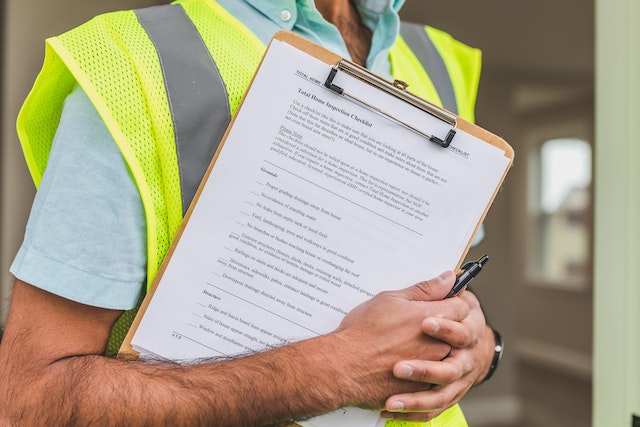
As a responsible landlord in the sunny state of Arizona, ensuring a smooth move-in process is crucial for maintaining positive landlord-tenant relationships and protecting your property investment.
One essential step in this process is conducting a thorough move-in walk-through inspection. This inspection helps document the condition of the rental unit before the tenant moves in, reducing disputes and ensuring both parties are on the same page.
In this guide, we will provide a step-by-step walkthrough for conducting a move-in inspection with your tenants in Arizona which will also help you during end-of-tenancy cleaning.
Step 1: Gather Necessary Documentation
Before the inspection, gather essential documents such as the lease agreement, a checklist of items to inspect, and a camera or smartphone for documenting the property's condition. It's essential to have these tools ready to streamline the process.
Step 2: Schedule the Inspection
Schedule a convenient date and time for the move-in inspection with your new tenant. Make sure it aligns with both your and the tenant's availability to ensure a smooth process.
Step 3: Create a Detailed Inspection Checklist or Form
Create a detailed checklist or form that covers all rooms and aspects of the property. This checklist should include items like walls, floors, appliances, plumbing, electrical fixtures, and safety features. Make sure to customize it to the specific features and conditions of your rental unit.

Step 4: Walk Through the Property Together
On the scheduled day, meet the tenant at the rental property and walk through the property together. Explain the purpose of the inspection and how it benefits both parties. Encourage the tenant to point out any concerns or existing damages they notice.
Step 5: Start with Exterior Inspection
Begin the inspection outside the property. Check for any damage to the exterior, including the condition of the landscaping, driveway, and overall curb appeal. Make note of any visible defects or issues that need attention.
Step 6: Inspect Each Room Methodically
Proceed with the interior inspection room by room. Here are some key points to consider for each room:
Living Room: Check the walls, floors, and windows for damage or cleanliness. Test any included features like ceiling fans, light fixtures, and blinds.
Kitchen: Inspect appliances, cabinets, countertops, and sinks. Ensure all appliances are in working order and document any signs of wear and tear.
Bedrooms: Examine the condition of walls, floors, windows, and closets. Ensure that doors open and close properly, and that locks work as expected.
Bathroom(s): Inspect plumbing fixtures, such as sinks, toilets, and tubs or showers. Check for leaks, mold, or mildew. Ensure that ventilation fans are working.
Step 7: Document Everything
As you conduct the inspection, document the condition of each item on your checklist. Take clear photographs and detailed notes. Make sure to include the date and time on your documentation to create a clear record.

Step 8: Test Appliances and Systems
Test all included appliances and systems, such as the HVAC, water heater, stove, and dishwasher. Ensure they are in good working order. This step is crucial to identify any issues that might not be immediately visible.
Step 9: Check Safety Features
Inspect and test safety features, including smoke detectors, carbon monoxide detectors, and fire extinguishers. Ensure they are in proper working condition and meet local safety requirements.
Step 10: Give Tenants Time to Inspect the Property
Let the tenant inspect the property and find additional problems. It’s important that they document their findings with proper photos. These should be taken into consideration during the move-out inspection.
Step 11: Discuss Findings and Tenant Responsibilities
After completing the inspection, sit down with the tenant to discuss your findings. Review any issues or damages you identified and determine if they are pre-existing or require immediate attention. Discuss the tenant's responsibilities for maintenance and repair during their lease term.
Step 12: Sign the Inspection Report
Both you and the tenant should sign the move-in inspection report, acknowledging its accuracy. This document will serve as a reference point when the tenant eventually moves out.
Step 13: Provide Copies
Make copies of the signed inspection report for both you and the tenant. This ensures that both parties have access to the same documentation in case of disputes down the road.

Step 14: Schedule Repairs and Maintenance
If any repairs or maintenance tasks are needed, schedule them promptly. Ensure that the tenant is aware of the timeline for addressing these issues.
Step 15: Follow State Regulations
In Arizona, it's essential to be aware of state-specific laws and regulations regarding move-in inspections, security deposits, and landlord-tenant responsibilities. Familiarize yourself with the relevant statutes to ensure compliance.
Step 16: Keep Records Secure
Store the move-in inspection report and any related documentation in a secure location. You may need these records for reference when the tenant moves out or if any disputes arise during their tenancy.
Importance of Walk-Through Move-In Inspections
Walkthrough move-in inspections are of utmost importance for both landlords and tenants. They serve as a critical tool to establish transparency and protect the interests of both parties. These inspections document the condition of the rental property at the beginning of the lease, reducing disputes over damages or wear and tear later on.
By conducting a thorough inspection and creating a detailed report, landlords and tenants can jointly acknowledge the property's state, ensuring accountability, communication, and fostering a positive rental experience.
Moreover, move-in inspections are instrumental in complying with legal requirements, especially in states like Arizona, which have specific regulations governing security deposits and property condition documentation.
Landlords who conduct these inspections demonstrate their commitment to maintaining safe and habitable living spaces, enhancing tenant satisfaction and retention. Ultimately, move-in inspections are a vital step in protecting the property, maintaining landlord-tenant trust, and facilitating a smoother, more harmonious rental experience for all parties involved.
Conclusion
Conducting a thorough move-in walk-through inspection is a crucial step for landlords to protect their investment and establish a positive tenant-landlord relationship. By following these step-by-step guidelines, you can ensure that the move-in process is smooth, transparent, and well-documented, ultimately benefiting both parties involved.
Remember that adhering to state-specific laws and regulations is paramount, so stay informed and seek legal advice if necessary to ensure compliance and protect your interests as a landlord in these states.
When in doubt, it’s important to hire the services of a reputable property management company. Reach out to SGI Property Management Phoenix for inquiries about walk-through inspections and other aspects of property management.









